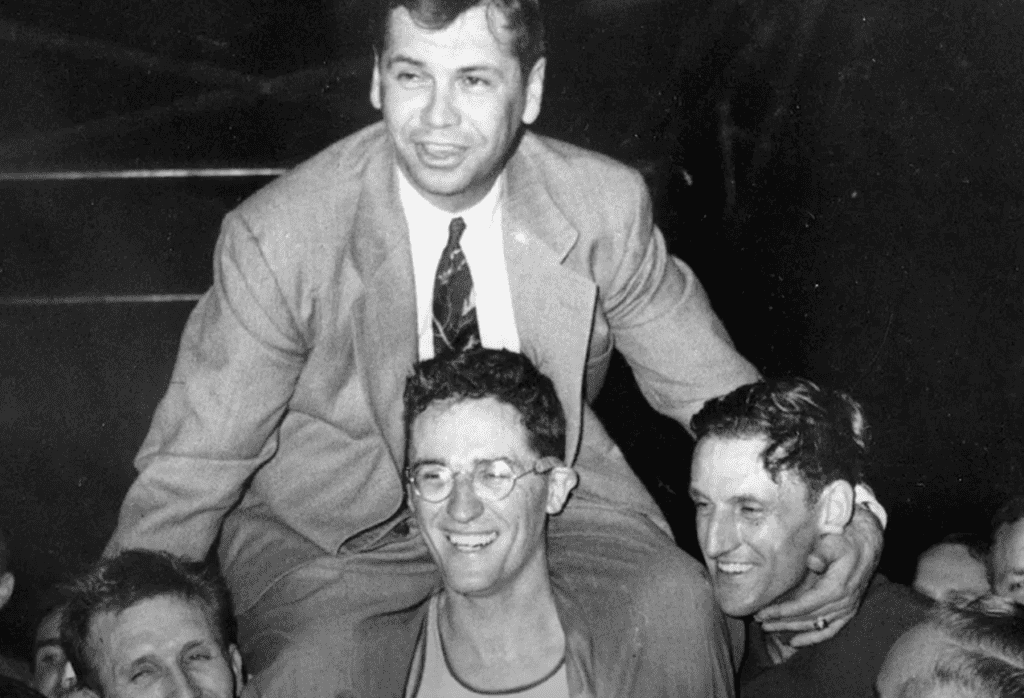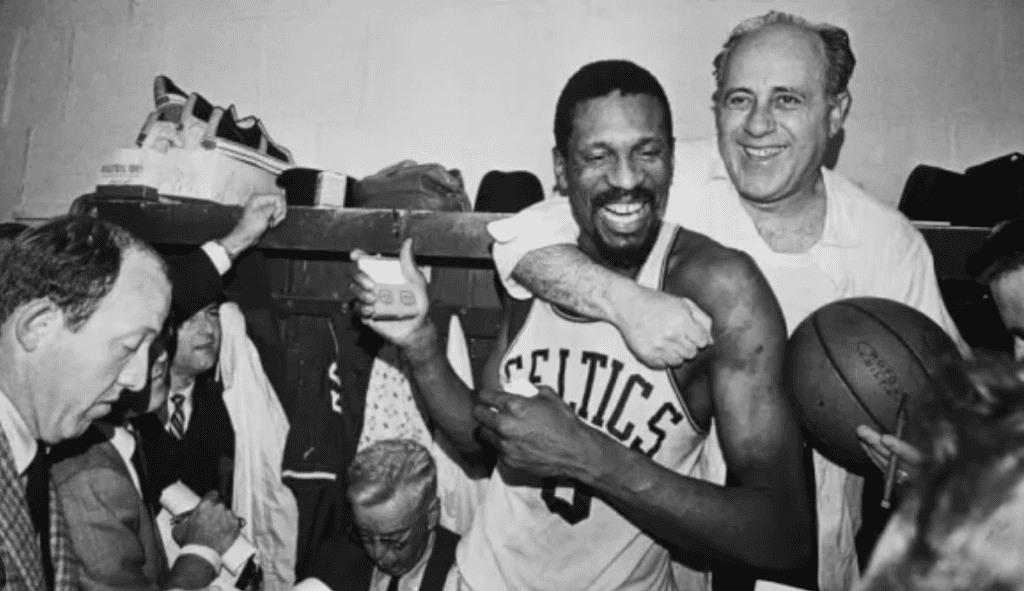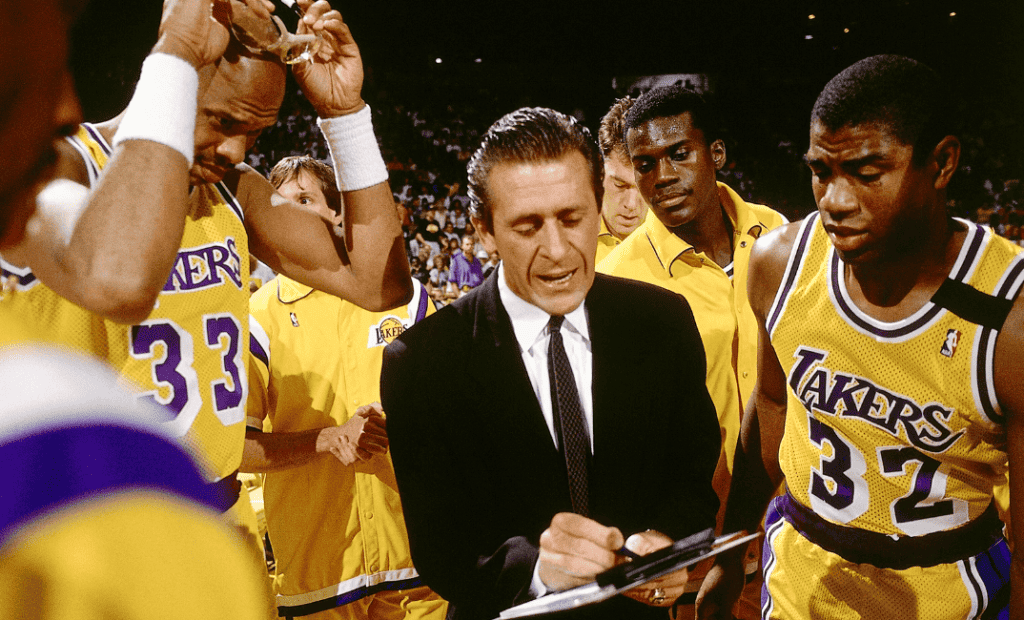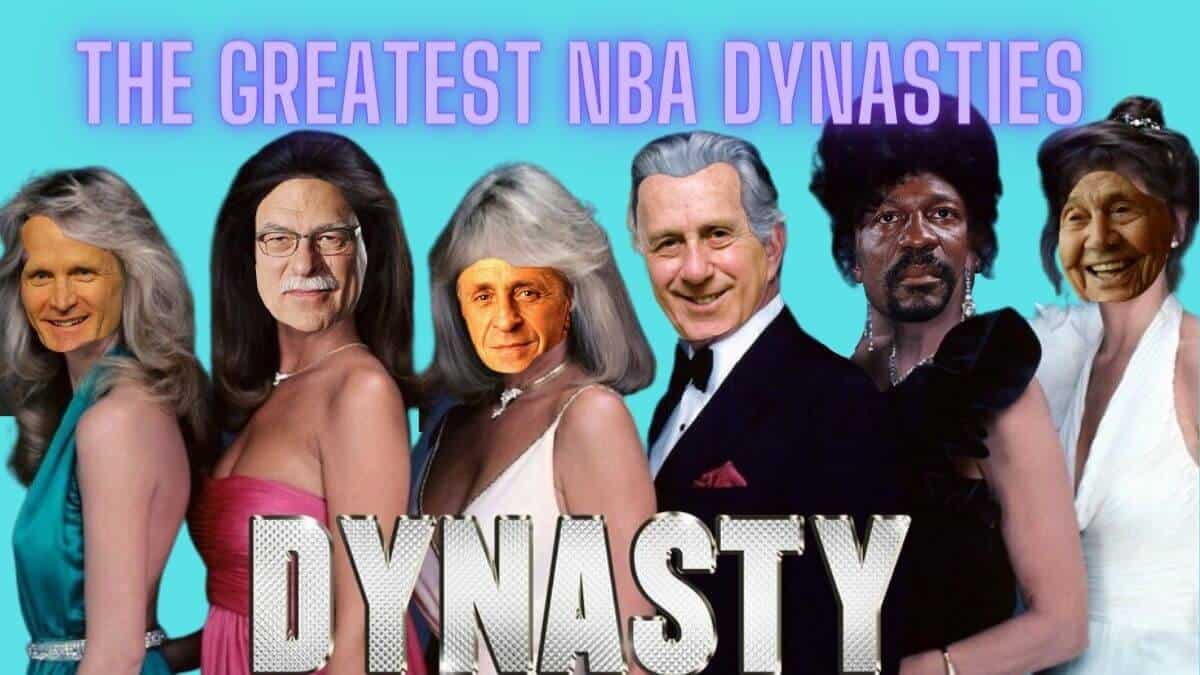To many a follower of the NBA, the history of the league is of little importance. But history sets the bar across generations. A basic understanding of the greatest NBA dynasties in history serves as a perfect introduction to the history of the league.
So we’re obviously going to cover the key dynasties. Go ahead and use the Table of Contents to jump around if there’s a specific dynasty you’re interested in. However, scanning them in natural chronological order is ideal.
Either way, let’s start with a definition…
What is an ‘NBA dynasty’
What qualifies as an ‘NBA dynasty’ is highly subjective. Roughly, an NBA dynasty is just a combination of players and staff that have assembled to achieve sustained greatness. But greatness is not easily quantifiable.
In practice, this usually means a team that has won multiple titles within a 5-year period. I’m sure some die hards would argue that greatness can be achieved without a title, but we need to draw a line somewhere.
For the purposes of this article, here’s our proprietary definition.
An NBA Dynasty is hereby declared as any team to have won 3 or more titles within a 5 year period.
I’m open to revision, but that bar seems to work pretty well. It’s simple and it invites every NBA dynasty that is widely accepted without opening the field to some of the shorter runs.
The Kundla Lakers (The First NBA Dynasty)
5 titles in 8 years
John Kundla and the Minneapolis Lakers are likely the most overlooked of the greatest NBA dynasties. They racked up all of their 5 wins within the first 8 years of the league’s existence, before the team shipped off to LA.

They were dominant! There’s no avoiding it. The Lakers were the team to beat in the first decade of the league.
The team started in 1947 with the NBL (a precursor to the NBA) as a reworking of the failed Detroit Gems. The gems had done poorly enough to land the first pick in the 1948 draft. Kundla and the Lakers snagged George Mikan.
With Mikan, The Lakers took the 1949 NBL title in their first (and last) NBL season.
The Lakers jumped to the BAA (later rebranded as the NBA) the following season. Continuing their winning streak, they beat Red Auerbach’s Washington Capitols to win the BAA title in 1949.
The rest of the NBL would merge into the BAA in August, 1949. With the merger came a rebranding as the NBA. In 1950, Kundla, Mikan, and The Lakers would claim the first title under the new NBA branding.
The Lakers gave up the conference to the champion Rochester Royals in 1951, but this was just a cap on the first half of the story. They would go on to rack up back-to-back-to-back titles in 1952, 1953 and 1954, accomplishing the league’s first official 3-peat, .
Mikan would become the first player inducted into the Basketball Hall of Fame. Commemorating his role in that first Lakers 3-peat, Mikan received an honorary championship ring from the Lakers when they completed their second 3-peat in 2002.
The Red Auerbach Celtics (The Most Dominant of the Greatest NBA Dynasties)
11 titles and 12 finals appearances in 13 years
It’s a funny dynamic. The Auerbach Celtics are simultaneously one of the greatest and worst things to ever happen to the sport of basketball. They brought us the first true black NBA superstar in Bill Russell, and that at a time when far far too many people legitimately thought that somehow being white made you an inherently better basketball player.

Russell would also become the first black NBA coach. I don’t know if you could say Auerbach was progressive for having passed the clipboard to his star player as much as he was just obsessed enough with winning to make the right choice. I suppose that’s progressive, for the 60’s anyway. That choice would add another 2 title flags to the rafters of the Boston Garden. The Celtics went one short of winning every NBA title in the 60’s and they were, by far, the one continuous team to have won the most NBA championship titles in history.
Even after Red left the floor and then Bill Russell retired, the Celtics continued to deliver a steady flow of titles for decades. As long as Auerbach was somewhere in the organization, the Celtics remained competitive. They claimed 16 titles under his watch.
But Auerbach also brought bragging rights to one of the most obnoxious fan bases in professional sports, establishing the Celtics as one of the 2 most successful franchises in NBA history and the only franchise to have won 8 back-to-back titles.
The Pat Riley Lakers (The Dynasty that Saved the League?)
5 titles and 8 finals appearances in 10 years
Technically, Riley was the Assistant Coach for the 1980 title, but it still kinda counts as the beginning of the Riley Lakers dynasty.
If you’re interested in a compelling dramatization, this is the specific dynasty that gets memorialized in the HBO series Winning Time: The Rise of the Lakers Dynasty. I recommend checking it out. It’s pretty good.
Even if you’re not a fan of the Lakers, you have to acknowledge what they’ve brought to the league and the sport. Jerry Buss and The ‘Showtime’ Lakers hit the scene at a time when interest in the league was dwindling. Without the sense of spectacle they brought to the league, the NBA would not be what it is today, for better or worse.

The Jordan Bulls (The Most Legendary NBA Dynasty)
6 titles in 8 years
Is it the Jackson Bulls or the Jordan Bulls? Phil Jackson would go on to seal his claim for GOAT coach status with a second independent dynasty in the 00’s. But during Jordan’s little sabbatical, the Bulls didn’t even make the finals.
So it’s complicated…
Whoever gets the credit, the Chicago Bulls dominated the nineties and may well have tied Auerbach’s streak if Jordan hadn’t run off (or been sent off?) on an MLB side quest.
And on top of being winners, they were a cultural phenomenon. From the 90’s Bulls we get Air Jordan and his sneakers, Rodman and his surrounding controversy, the rise of the triangle offense, one of the most beloved books on the basketball ever written, and plenty more.
The Phil Jackson Lakers (The Confirmatory Dynasty)
5 titles and 7 finals appearances in 11 years
Wait, or is it the Kobe Lakers? Or the Shaq Lakers? Nah, we gave the Bulls to Jordan, so we’ll give the third great Lakers Dynasty to Phil Jackson.
Before Jackson hopped over to the Lakers, Shaq stopped by his little cabin in Montana. Coach Jackson told him to go move some logs, then showed him his ring collection and made him promise to quit rapping.
Ostensibly, this was to show Shaq who was boss. And it was ultimately the fact that Jackson was, indeed, the boss.
Jackson was already a well-established coaching legend coming off one of the most successful operations in history. He took a year off and then jumped right into another championship run with a fresh program on a new team.
This is incredible. It’s one of the most dramatic flexes in NBA history. This guy took a team that, by traditional standards, was not built to win an NBA title and ran an offense which was considered even by it’s creator to quite possibly not be an NBA-caliber offense, and won 6 titles. He then took just 1 season off before taking a new team straight into a 3-peat with no lag.
How often do you see coaches these days insisting that we need to trust the process? Sure, he had Shaq and Kobe, but Kobe was just a 4th year PG at the time and still mostly unproven. And Jackson’s chosen system, the triangle offense, can take years to develop, even in elite players.
The Popovich Spurs (The Relentlessly Lucky Dynasty)
5 titles in 3 years
The Navy man. Personally, not a big fan of Pop’s style, but it clearly works. While he hasn’t had the immaculate grouping of coaches like Jackson and Kundla and certainly not Auerbach, Pop has kept the Spurs competitive for a very long time.
But there was a moment in time there when the Spurs were absolutely stacked. They picked up the pick just in time to match Tim Duncan with Tony Parker, Manu Ginobli and some of the twilight of David Robinson.
They won 5 titles between 1999 and 2014. Between 2003 and 2007, they won a title every other year. They haven’t made it back to the finals since 2014, but they just got ahold of one of the most anticipated talents in NBA history in the form of Victor Wembanyama.
Pop looks to be on his way to another run of titles with his 3rd ridiculously fortunate first draft pick. This should leave fertile soil to pass off to his successor when he inevitably retires from the floor in the relatively near future (even though he did just setup a new 5 year coaching deal).
The Steve Kerr Warriors
4 titles and 6 finals appearances in 8 years
If your a newb (nothing against you, I’m a relative newb myself) you may well have overlooked the fact that Steve Kerr is a product of the Phil Jackson dynasties.
Kerr played with Jordan and the 90’s Bulls for a front row seat to the greatest clinic of all time on how to build and maintain an NBA dynasty. It’s not tough to argue that Jackson had some influence on Kerr, and gets at least a sprinkle of credit for a third epic NBA dynasty on top of the 2 he coached.
But that’s a major distraction from the fact that Kerr is an absolute winner in his own right. Kerr managed a heater of a playing career on relatively little more than elite shooting in terms of skill. If you don’t know, he is the all-time leader in 3-point percentage over meaningful attempts .
But the leadership, knowledge and feel for the game that was less glaringly obvious in his player years, has shined throughout his coaching career. Kerr was instrumental in re-working the fabric of the NBA to accommodate a finer appreciation of marksmanship.
And of course, really it’s the Kerr / Curry dynasty. We haven’t seen Kerr win a championship without Curry, and we may not see it. But Curry fits perfectly into a strategy built around a deep understanding of distance scoring in the NBA.
Runners Up: The Bobby Leonard Pacers
The Pacers have yet to win an NBA title. However, in 1970,1972, and 1973 they won the ABA title. That’s 3 titles in 4 years and over 30% of all championship titles in ABA history. The Pacers are the most dominant ABA squad of all time.
It’s impossible to say what would have happened if the Pacers were in the NBA in the early 70’s. But they just might have swiped a title or two from the Holzman Knicks or the Wilt Chamberlain era Lakers.
Takeaways From Looking at the Greatest NBA Dynasties
These are the teams that have made the NBA what it is today. In each new dynasty, you find the fingerprints of the predecessors. By taking a close look at the greatest NBA dynasties, you see the evolution of what it takes to build a competitive basketball team.
The picture is not complete. There are some incredible basketball legacies that are overlooked in this view of league history. But it’s a view that serves well as the backbone on which to frame a deeper understanding of NBA history.
Now go bug your family with some of this stuff. In my experience, your family loves it when you ramble on about basketball and the systemic progression of the NBA.
